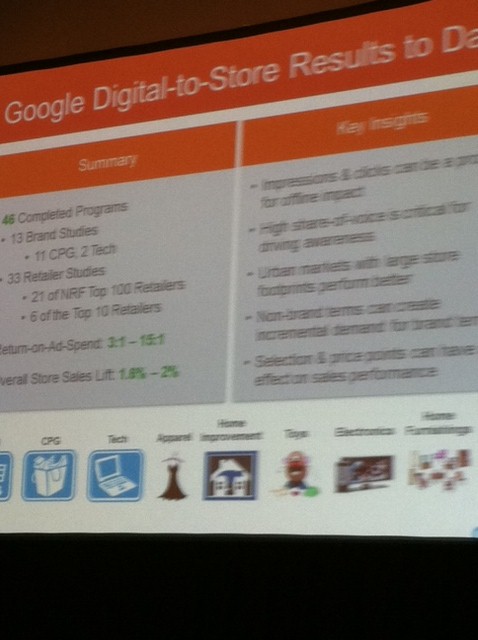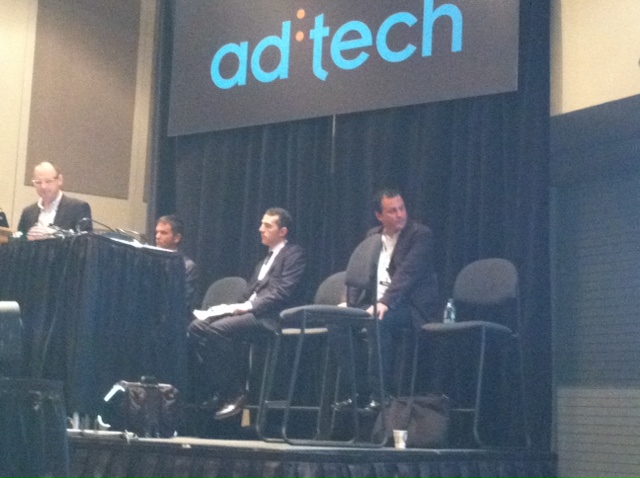In an age where marketers are managing multiple online campaigns at once, the pressure to demonstrate ROI is at an all-time high. At ad:tech New York, Google’s Matthieu McAuliffe (of the Offline Impact Team) and other experts spoke about how marketers can overcome the “burden of ROI proof” without getting lost in the vast terrain of Analytics.
McAuliffe said that the challenge of demonstrating internet marketing success is complicated by the fact that online marketing results frequently occur offline. In fact. he says that just 7 percent of sales are online, but businesses can’t lose sight of the fact that the 93 percent of sales that occur offline are still impacted by the internet.
He shared insights from Google’s research of a large volume of its ad partners to reveal that digital-to-store results are strong. Return-on-ad-spend figures range from 3:1 to 15:1 for a number of the company’s ad partners (and he later told Brafton that the average client sees 7:1 return-on-ad-spend). This translates into about 2 percent lifts in overall sales. McAuliffe suggested Google will be releasing more information about how businesses can determine the offline ROI for online marketing, and he suggests that one preliminary correlation in Google’s results is high click rates.
 Although it can be overwhelming to try to discern the overall impact of online marketing, McAuliffe told marketers to first avoid being paralyzed by the figures and dive in. Then, businesses that want to understand their ROI must develop a cycle of continuous measurement and learning. He said marketers should pick a starting point to get their feet wet, and then investigate the range of data available to them in digestible chunks.
Although it can be overwhelming to try to discern the overall impact of online marketing, McAuliffe told marketers to first avoid being paralyzed by the figures and dive in. Then, businesses that want to understand their ROI must develop a cycle of continuous measurement and learning. He said marketers should pick a starting point to get their feet wet, and then investigate the range of data available to them in digestible chunks.
He and other ad:tech experts agreed that at the end of the day, determining the ROI of different campaigns is about careful monitoring, exploring correlations and – above all – understanding what is being measured. When data points to reach and frequency, categorize it as such. At the same time, they suggested ad:tech attendees focus on continuing campaigns that have positive correlations to rising profits and sales – regardless of whether or not they’re able to measure the needle on nuances of each marketing effort’s successes.
Overall, the session makes clear that analytics are a complicated issue and marketers must balance seeing the forest through the trees. For instance, a problem with real-time analytics, the experts said, is that marketers can get bogged down in instant results and forget to look at the big picture.
For those marketers that want more info on which channels drive offline (or online) sales, Google may soon be offering more insights soon on how digital outreach compares to other forms of marketing and advertising. McAuliffe indicated that purpose-driven analytics are a work in progress. He said Google understands that businesses (especially those that see the majority of their sales happening offline) want to know, “Does the [equivalent of the] serendipitious moment of responding to an ad in the Sunday circular happen online?” and analytics providers are working on ways to compare the impact of different media.
In the meantime, marketers might heed these experts’ advice about looking for correlations and always keeping their eyes on the big prize – leads and sales. Brafton recently reported that the majority of marketers say SEO has the biggest impact on their lead generation efforts.




